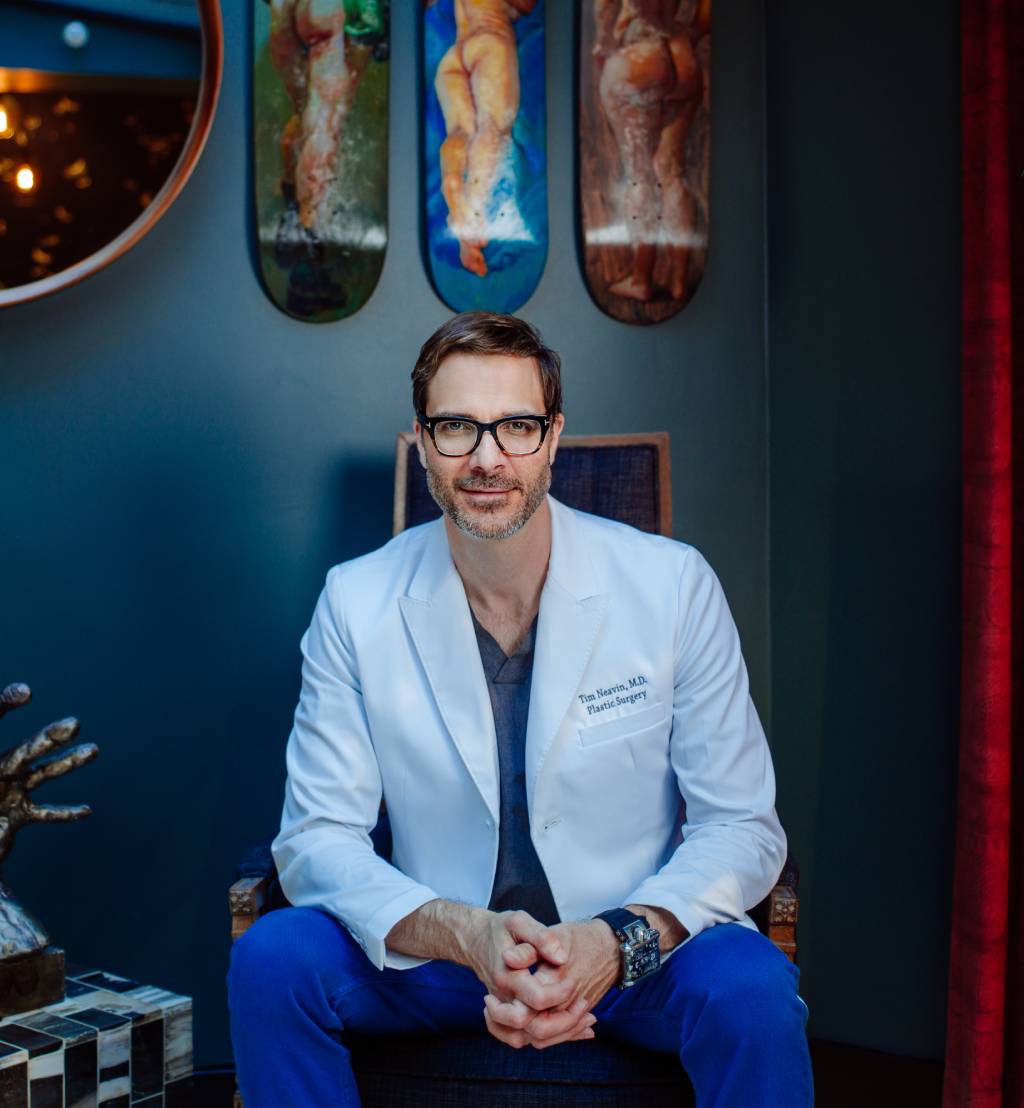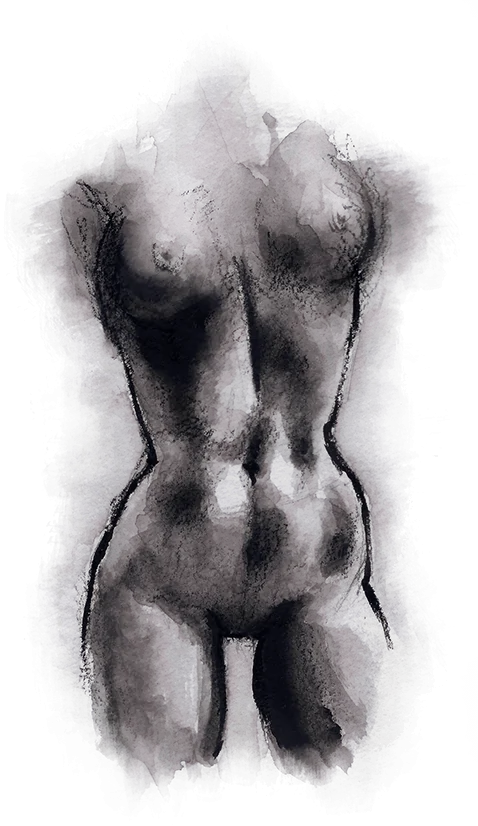On This Page
Why Women Choose Breast Reconstruction
Restored Body Image
Reconstruction helps many women feel whole again after mastectomy. Looking in the mirror and seeing a feminine silhouette can be powerfully healing, both physically and emotionally.
Clothing Freedom
Without external prostheses, patients can wear the clothing and swimwear they love. Many women appreciate being able to dress without accommodating prosthetic breasts.
Multiple Technique Options
Modern reconstruction offers choices: implants, your own tissue, or a combination. Dr. Neavin tailors the approach to each patient's anatomy, health history, and personal preferences.
Long-Lasting Results
Whether using implants or your own tissue, reconstruction creates results designed to last. Many women enjoy their reconstruction for decades with minimal maintenance.
Expected Results
The goal of breast reconstruction is to create breasts that look natural and proportionate to your body. While reconstructed breasts won't be identical to natural breasts (sensation and tissue characteristics differ), most women are pleased with how their clothes fit and how they look in a mirror.
Natural Breast Shape
Dr. Neavin focuses on recreating natural breast contours, including the gentle slope from chest wall to nipple and appropriate projection for your frame.
Improved Symmetry
For unilateral mastectomy, matching the reconstructed breast to the remaining breast is a key focus. Procedures on the opposite breast can also help achieve optimal symmetry.
Permanent Results
Reconstruction creates lasting results. While implants may eventually need replacement, tissue-based reconstructions using your own body remain stable over time.
5-Star Experiences
After my mastectomy, I didn't know if reconstruction was for me. Dr. Neavin took time to explain every option and never pushed me toward any decision. When I was ready, he delivered results beyond what I imagined possible. I finally feel whole again.
Reconstruction Techniques
Dr. Neavin offers the full spectrum of breast reconstruction techniques. The best approach depends on your body type, overall health, cancer treatment plan, and personal preferences.
01 Implant-Based Reconstruction
02 DIEP Flap Reconstruction
03 Latissimus Dorsi Flap
04 Nipple Reconstruction and Areola Tattooing
Candidates
Ideal Candidates
Good candidates for breast reconstruction include women who have undergone mastectomy (or plan to) and want to restore breast shape. Ideal candidates are in good overall health, don’t smoke, and have realistic expectations about what reconstruction can achieve. The timing can be immediate (at the same time as mastectomy) or delayed (months or years later). Both approaches have advantages depending on your specific situation and treatment plan.
Not Ideal Candidates
Reconstruction may not be the right choice for women with serious health conditions that increase surgical risk, those who smoke and cannot quit, or patients facing additional cancer treatments that would compromise healing. Some women also simply prefer to go without reconstruction, and this is an equally valid choice. Dr. Neavin discusses all options openly so each patient can make the decision that’s right for her.
Surgery Day Journey
Pre-Op Preparation
Surgery
Recovery Room
Comprehensive
Aftercare Support
Follow-Up Appointments
Oncology Coordination
Revision Planning
Healing Timeline
Every patient heals differently, but this timeline offers a general guide for your return to daily life.
Week 1
The first week focuses on rest and managing surgical drains. Expect significant fatigue and limited mobility. This is normal. Pain medication keeps discomfort manageable. Most patients stay overnight in the hospital, especially after flap procedures. You'll need help at home for daily activities.
Weeks 2-3
Drains typically come out during this period. Swelling and bruising begin fading. Light walking is encouraged to promote circulation, but avoid lifting anything over 5 pounds. Most women can handle light daily activities but still need rest.
Weeks 4-6
Many patients return to desk jobs around week 4-5. Driving can resume once you're off pain medication and can move comfortably. Gradual return to normal activities, though heavy lifting and strenuous exercise remain off-limits.
Months 2-3 and Beyond
Full activity, including exercise, typically resumes around 8-12 weeks. Swelling continues resolving for several months. Scars mature over 12-18 months, gradually fading from pink to white. Final results become apparent 6-12 months post-surgery.
Safety &
Potential Risks
Dr. Neavin believes in complete transparency about reconstruction risks. While serious complications are uncommon, understanding potential issues helps patients make informed decisions and recognize problems early if they occur.
Important Considerations
- Infection at surgical sites
- Bleeding or hematoma formation
- Poor wound healing, especially in previously radiated tissue
- Implant complications (capsular contracture, rupture, malposition)
- Flap complications (partial or complete flap loss in tissue-based reconstruction)
- Fat necrosis (hardened areas of fat tissue)
- Asymmetry requiring revision surgery
- Changes in sensation at the breast or donor site
- Anesthesia-related risks
Radiation therapy, either before or after reconstruction, increases certain risks and may affect the timing and type of reconstruction recommended.
Frequently Asked Questions
How soon after mastectomy can I have reconstruction?
Will my reconstructed breast feel natural?
How many surgeries will I need?
Does reconstruction interfere with detecting cancer recurrence?
What if I had a mastectomy years ago?

Artistry Meets
Surgical Precision
Breast reconstruction after cancer treatment is one of the most meaningful procedures a plastic surgeon can perform. For Dr. Neavin, every reconstruction represents a partnership, working alongside oncologists, breast surgeons, and radiation oncologists to achieve the best possible outcome.
His approach combines microsurgical expertise with a deep understanding of breast aesthetics. Having trained extensively in both reconstructive and cosmetic breast surgery, Dr. Neavin doesn’t just rebuild breasts. He recreates natural shape, symmetry, and proportion that help women feel like themselves again.
“I’ve sat with many women facing breast cancer,” Dr. Neavin explains. “The decision about reconstruction is deeply personal. My job is to present all the options, answer every question, and support whatever choice feels right for each patient. There’s no one-size-fits-all approach here.”
Beverly Hills & Santa Barbara
Start Your Transformation
Schedule your private consultation with Dr. Neavin today.

